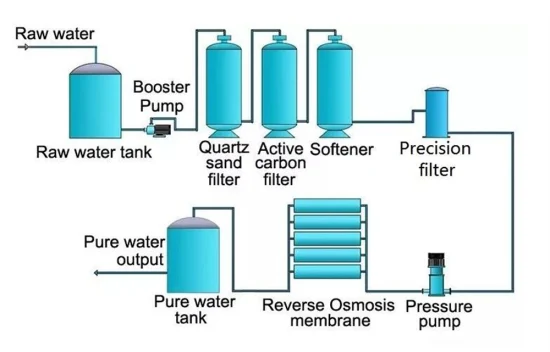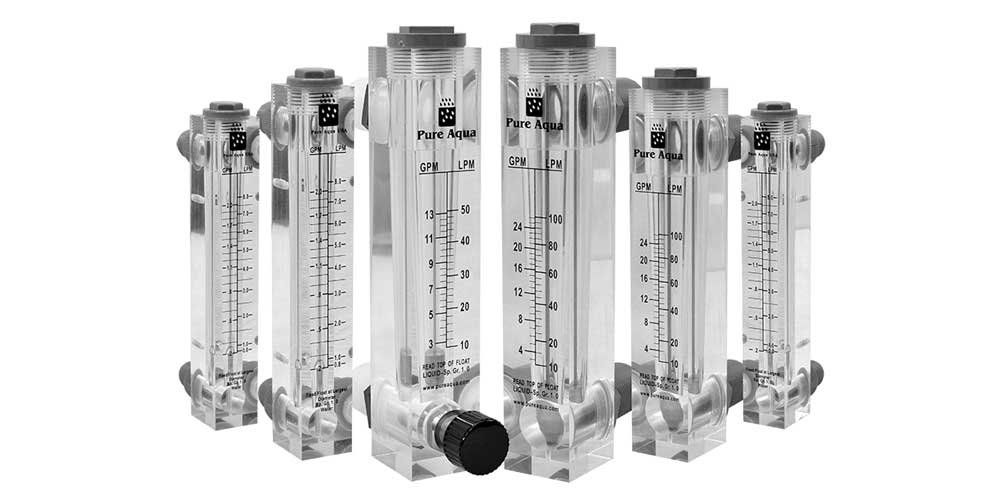
Reverse osmosis, a popular desalination technique, can provide a solution for areas where freshwater is scarce. This method takes salty or brackish water and uses a semipermeable membrane to filter out the salt and other contaminants. This leaves behind drinkable freshwater.
How Reverse Osmosis Desalination Works
Reverse osmosis desalination is a technique that uses a high-pressure pump to drive saltwater through a semipermeable membrane. Water molecules are the only ones that can pass through the barrier. Any salt or other contaminants are retained and released as a concentrated brine. Following collection, the water undergoes additional treatment before distribution.
Here are some disadvantages of the reverse osmosis method of desalination.
Concerns with water quality
The last drawback is up for debate. In particular, desalination technology often employs chemical methods to extract freshwater from seawater. Because of the potential dangers posed by some of the chemicals employed in treatment, worries about water quality are understandable in such a situation.
Desalination often results in water with a greater salt content due to the chemical treatment process. Producing safe water for human use requires exacting standards of monitoring and treatment.
Cost considerations
Two more concerns are the high initial investment and ongoing infrastructure costs of reverse osmosis desalination. Developing desalination machines requires significant time, energy, and materials.
Furthermore, energy costs and continuous maintenance charges can add up quickly. As a result, two major obstacles are lowering the price of desalination and making it more widely used.
The impact on the environment
There is a lot of worry about the environmental impact of reverse osmosis desalination facilities. This is because they release minerals from saltwater back into the ocean. This is known as brine, and it has chemical and salt concentrations that are too high to be safe for aquatic life. It can also upset the natural equilibrium of aquatic ecosystems.
That is why it is so important to manage brine disposal properly to keep environmental effects to a minimum.
Excessive use of energy
One of reverse osmosis desalination’s main drawbacks is the high energy requirement. It takes a lot of energy and leaves a lot of carbon dioxide when you remove salt from water. Concerns about climate change and environmental sustainability arise from energy reliance on fossil fuels.
Can reverse osmosis remove salt in water?
Due to its many benefits, reverse osmosis is quickly replacing other technologies as the go-to for salt removal. Reverse osmosis is a waste-free, energy-efficient alternative to less efficient processes like distillation and evaporation. Furthermore, heavy metals, viruses, and bacteria are only some toxins that RO may eliminate.
 How does salt get into the water?
How does salt get into the water?
Worldwide, substantial amounts of minerals contain sodium, ranking sixth in abundance on Earth. Almost all drinking water contains sodium because of how soluble sodium salts are.
Many ways exist for salt to enter the water supply. Here are the three most common ways salt can end up in your water supply:
- Water softener
- Road salt
- Groundwater water that has come into contact with salt layers
How does reverse osmosis remove salt from water?
Ever wanted to know the inner workings of a reverse osmosis system? In fact, it’s rather remarkable. The purpose of this multi-stage filter is to purify your water supply. It does this by removing harmful substances like chlorine and other pollutants. What makes it such a powerful tool for eliminating salt water is detailed here:
- Reverse Osmosis Membrane:
We have reached the semipermeable membrane, the most important step in the process! Its minuscule pore size of 0.0001 microns catches dissolved salts and stops them from flowing down the drain into your drinking water source.
- Carbon Filtration:
This next step gets rid of organic molecules like chlorine and other contaminants in municipal water supplies. This not only helps improve the water’s smell and taste, but it also purges our water supply of pollutants that could be dangerous.
- Pre-Filter Sediment Removal:
A pre-filter helps to remove larger particles, such as sand or dirt, in the initial step of the process. After that, they are screened out before continuing with the filtration process.
- Remineralization Filter (Optional):
An optional remineralization filter phase is offered for individuals who wish to add minerals such as potassium, calcium, magnesium, and more to their purified water after the earlier treatment steps have removed all other contaminants.
How did it turn out? Refreshingly pure, crystal-clear drink that won’t leave you wondering what’s in it every time you drink it!
What Are Some Alternative Methods for De-Salting Water? There are other ways to desalinate water besides reverse osmosis; however, it is still the most effective.
Additional methods for desalinizing water include:
- Distillation
Removing impurities from water by means of boiling and condensation is known as distillation.
The process involves boiling water to the point where it evaporates. This removes contaminants such as salt, which has a different boiling point than water.
One efficient way to treat water is distillation, which yields drinking water. The one negative aspect is the longer time it takes to create water compared to reverse osmosis.
- Electro-dialysis
The process of desalinizing water with electricity is possible. A cathode, which is negatively charged, and an anode, which is positively charged, can be easily separated by submerging them in water. After that, a porous membrane is placed between them.
Pure water remains behind as the dissolved ions that make up the salt move toward the cathode and anode with their respective electrical charges.
Would water softening and reverse osmosis work together?
Water softeners and reverse osmosis systems complement each other nicely. One drawback of water softeners is the salt they leave behind in the water, even after they remove hardness minerals. RO, an additional step in water filtration, removes salt and other impurities. With this approach, you may rest assured that the water you drink will be safe, soft, and salt-free.
The water softener should be installed first if you are combining the two types of systems, and the RO filter should be installed afterward. This is because RO membranes are susceptible to deterioration from minerals that create hardness. The water becomes soft before it reaches the membrane if the softener is added beforehand.
Conclusion
One of the most efficient desalination technologies is reverse osmosis. It can convert brackish water or seawater into drinking water. It is a scalable and affordable technology that can prevent fouling of the membrane. Also, correct disposal of the brine concentrate is essential for minimizing environmental damage.
One reliable and risk-free method for purifying water is reverse osmosis. The process involves pumping water across a semipermeable membrane, which then collects any remaining salt or other contaminants. Although more costly, reverse osmosis is the most effective filtration process for removing pollutants.
